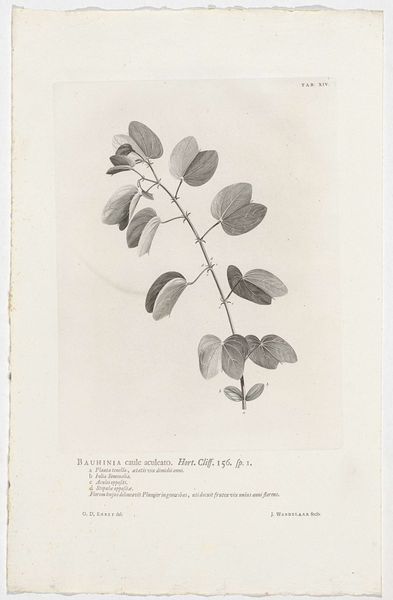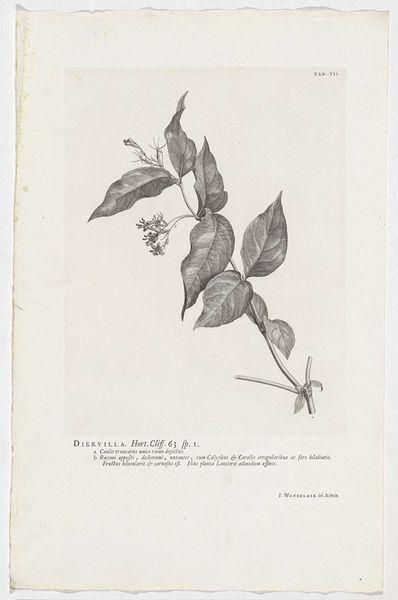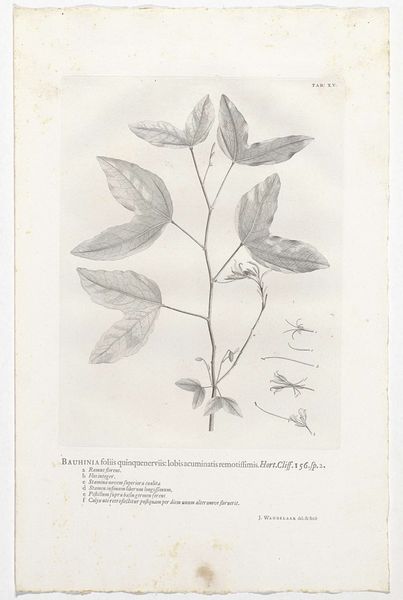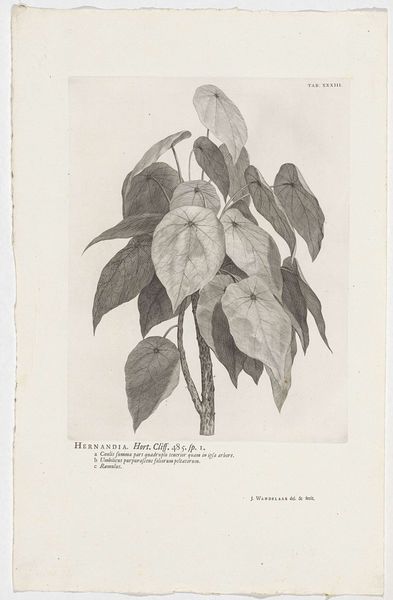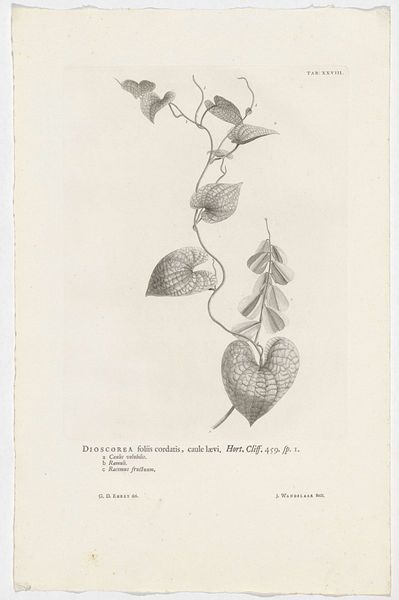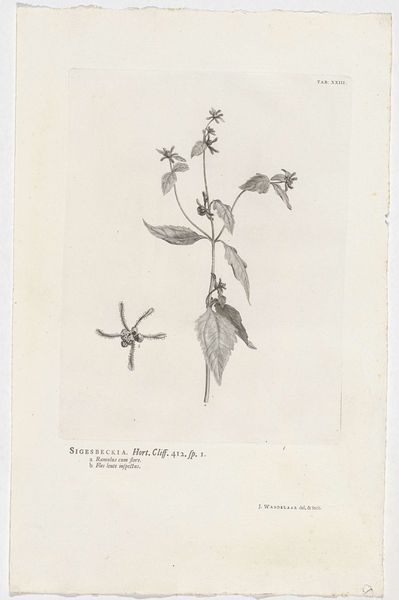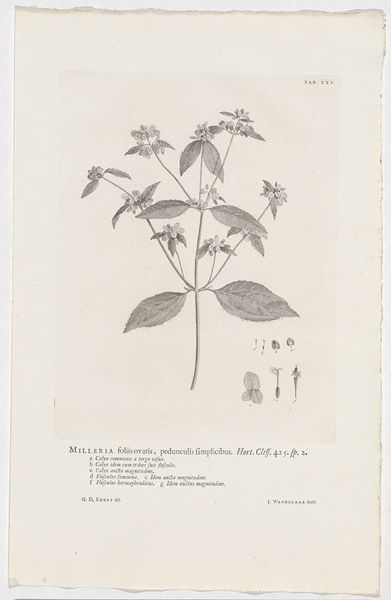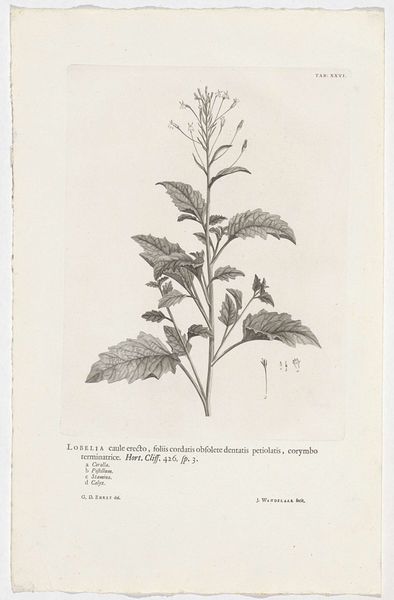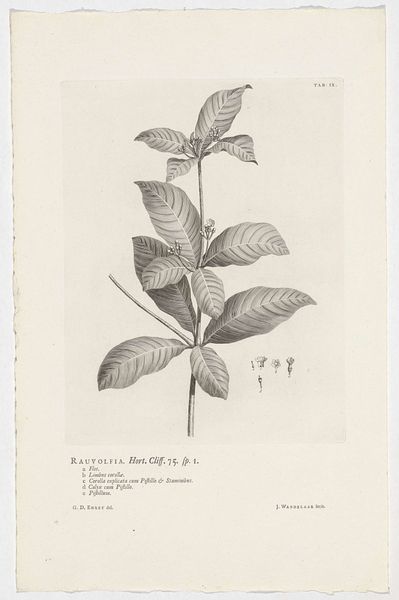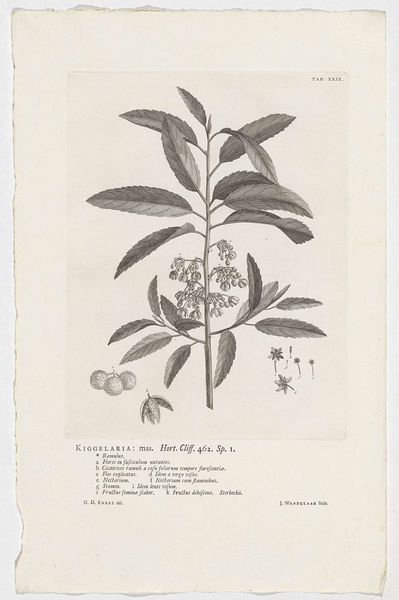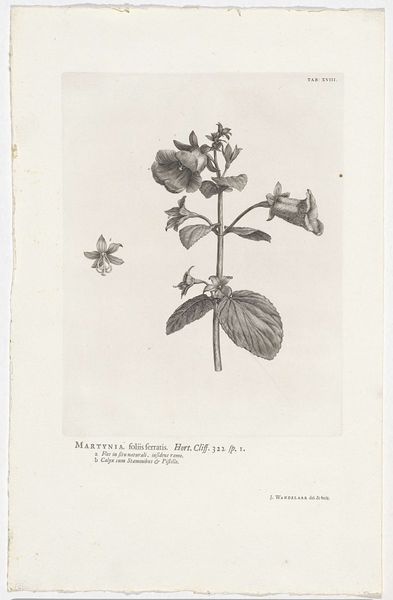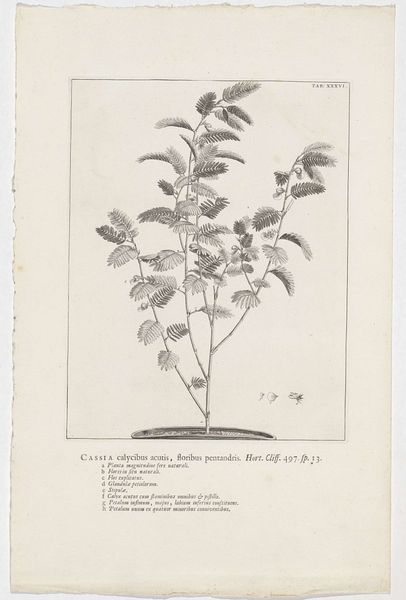
drawing, print, engraving
#
drawing
# print
#
white dominant colour
#
old engraving style
#
history-painting
#
engraving
#
botanical art
Dimensions: height 290 mm, width 221 mm
Copyright: Rijks Museum: Open Domain
Curator: This engraving is "Browallia americana," made around 1738 by Jan Wandelaar. It resides here at the Rijksmuseum. Editor: The botanical details, rendered in monochrome, evoke a scientific detachment. Almost like a specimen under examination, revealing a sort of hidden, methodical beauty. Curator: Absolutely. Wandelaar's work sits at the intersection of art and science. He’s using printmaking to participate in, and document, the explosion of global trade, which included plant species. How might access to such information reshape our perception of the natural world? Editor: Thinking about the symbols here, plants, especially newly discovered ones, became metaphors for colonial expansion. Each specimen was a tiny conquest, its image contributing to a Western cataloging of the world. There is even a little plant seed here. Curator: That's a powerful observation. The detailed annotations and almost clinical presentation highlight this era's attempt to control and categorize nature through scientific illustration, fitting neatly into the Linnaean system. What could it tell us about shifting perceptions of women’s relationship to nature during this period? Editor: This plant is not just a pretty thing but also an embodiment of an age's worldview—the intersection of discovery, knowledge, and power is striking, but that seed suggests the ever-renewing life force of our natural world and could represent an ecological system rather than simple objectification. The flower's symbolism varies cross-culturally, each association layered onto its image over time. Curator: Layering is such an accurate way to see this—it's tempting to consider if these early botanical studies carry gendered associations related to scientific, artistic and intellectual property ownership in the eighteenth century. It is complex when seen from this angle, especially within the historical context, even. Editor: Indeed, such a precise yet emotionally evocative piece, holding within its lines stories of science, exploration, and evolving understanding. Curator: I agree. It’s a reminder that what we perceive as simple scientific illustration is entrenched with deep cultural histories.
Comments
No comments
Be the first to comment and join the conversation on the ultimate creative platform.

